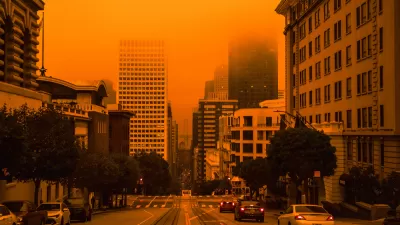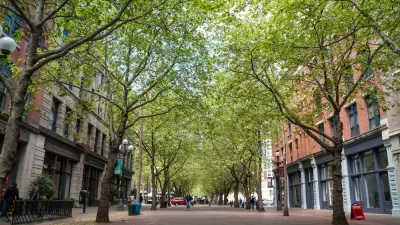Howard Schneider examines a recent study by the World Bank, issued as a call-to-action for the international community not merely to curb, but to plan for and mitigate the crises that a 4°C rise in global temperatures would bring.
Warning of widespread crop failures, malnutrition, and dislocated populations, the World Bank issued a study Sunday urging the international community to take action on the mounting challenges of an increasingly sweltering planet.
The report identified a threshold of 4 degrees Celsius, beyond which global warming could cause irreparable damage to human settlements, including a 3-foot rise in sea levels by 2100. Paraphrasing World Bank President Jim Yong Kim, Schneider writes, "World climate goals aim to hold the mean temperature increase to under 2 degrees Celsius, by curbing emissions of greenhouse gases that trap heat... That goal is unlikely to be met, with an increase of 3 or 3.5 degrees Celsius now considered probable."
In comparison, the last ice age followed a drop in global temperatures of about 4.5 degrees Celsius.
"The kind of sea level rise we are talking about is going to make the process of urban planning and services to the poor absolutely fundamental," said Rachel Kyte, the World Bank’s vice president for sustainable development.
Notes Schneider, "But the bank report concluded that a 4 degree jump in average temperatures would push some countries or regions to the brink of collapse, regardless of how hard they try to adapt."
FULL STORY: World Bank warns of ‘4 degree’ threshold

Maui's Vacation Rental Debate Turns Ugly
Verbal attacks, misinformation campaigns and fistfights plague a high-stakes debate to convert thousands of vacation rentals into long-term housing.

Planetizen Federal Action Tracker
A weekly monitor of how Trump’s orders and actions are impacting planners and planning in America.

San Francisco Suspends Traffic Calming Amidst Record Deaths
Citing “a challenging fiscal landscape,” the city will cease the program on the heels of 42 traffic deaths, including 24 pedestrians.

Defunct Pittsburgh Power Plant to Become Residential Tower
A decommissioned steam heat plant will be redeveloped into almost 100 affordable housing units.

Trump Prompts Restructuring of Transportation Research Board in “Unprecedented Overreach”
The TRB has eliminated more than half of its committees including those focused on climate, equity, and cities.

Amtrak Rolls Out New Orleans to Alabama “Mardi Gras” Train
The new service will operate morning and evening departures between Mobile and New Orleans.
Urban Design for Planners 1: Software Tools
This six-course series explores essential urban design concepts using open source software and equips planners with the tools they need to participate fully in the urban design process.
Planning for Universal Design
Learn the tools for implementing Universal Design in planning regulations.
Heyer Gruel & Associates PA
JM Goldson LLC
Custer County Colorado
City of Camden Redevelopment Agency
City of Astoria
Transportation Research & Education Center (TREC) at Portland State University
Jefferson Parish Government
Camden Redevelopment Agency
City of Claremont




























